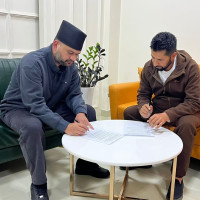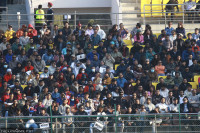Opinion
The road not taken
The government’s priority should be on building affordable electricity-based mass transit systems
Prashanta Khanal
The oil crisis in the 1970s, and increasing pollution and traffic fatalities led many European cities to rethink their car-based urban transport system and made them prioritise mobility of people over cars. The limited financial resources in Latin American cities pushed the authorities to innovate surface-based transit system. The experiences and mistakes of these cities, if not the current blockade and fuel crisis, should motivate Nepal to make
the transport system in the country less dependent on fossil fuel and more sustainable and efficient.
Smart mobility
Walking and cycling are the basic and most efficient transportation systems. However, they are largely ignored in transport planning. Conventional transport planners often make an excuse of not having enough space for building cycle tracks and wider sidewalks. But urban transport challenges are not merely about space, it is about priority: Private vehicles or people walking and cycling. Space will never be enough if mobility of private vehicles is given foremost priority. It is also about perspective and attitude towards cycling. Jeff Olson, a transport planner, wrote in his book, ‘The Third Mode’, that walking and cycling were often perceived as the third mode of transport (automobiles and mass transit being the first and second modes) and treated accordingly by the planners.
Conventional planners and policy makers often say that we are not Copenhagen or Amsterdam when referred to their cycling culture, but initially neither Copenhagen nor Amsterdam were bicycle-friendly cities. But if these cities, once dominated by cars and where most people can afford cars, can turn it around, even other cities and countries including Nepal can. The fact that most of the people in Nepal cannot afford to buy private cars and that the government does not have financial resources to build large road infrastructures such as flyovers and multilane highways should encourage the authorities to invest in making cities more cycle-friendly. And Kathmandu would be the ideal place to start as it has mixed-use urban settlements, which is already a basic criterion for making a cycle-friendly city. The average daily travel distance of the Valley is less than 5 km, which makes most of the trips cyclable. The only things required are safer infrastructures for cycle users, supportive policies and change in societal attitude towards cycling, most importantly of conventional planners and policy makers who are often fascinated by large transport infrastructures.
There is a huge misunderstanding among policy makers and planners in the country when it comes to building cycle-friendly cities. Making a cycle-friendly city does not mean that segregated cycle lanes should be built in every nook and corner or that everyone should travel on bicycles. Only wide roads with higher traffic require segregated lanes, and other roads can have shared lanes provided there are traffic calming measures for vehicles. The prerequisite is providing good network of safer spaces for people to cycle and giving priority to their mobility.
Moreover, cycle tracks and sidewalks are not just infrastructures; they are the rights of the users. Making a cycle-friendly and walkable city is far beyond a mobility agenda. It is also about creating healthier, more active and liveable cities. It is about building a more cohesive, equitable and democratic society. In fact, walkable and cyclable urban places are the cities of the future.
Electric mass transit
However, after the fuel crisis the policy initiatives and discussions are focused on electric vehicles, but unfortunately largely on electric cars. Although electric cars are non-polluting and do not rely on imported fossil fuels, they are not sustainable urban transport solutions. Growth of private vehicles will remain the same even if all the existing private vehicles are replaced with electric ones. Thus, traffic congestion, expenditure and urban space requirement for road infrastructures, parking spaces, road fatalities, etc., will also remain the same, if not worsen. Of course, the government should lower the tax of electric cars, but the government’s priority should be on building affordable electricity-based mass transit systems. To ease the existing mobility problem, the government needs to operate large electric or cleaner buses with scientific route planning and reform the existing public transport system. However, just adding a number of buses in the existing congested routes without limiting car usage and freeing road space will not ensure an efficient bus service.
Building a metro train in the Kathmandu Valley is also being considered. Although metros can carry a large volume of passengers, they are ridiculously expensive and will require at least a decade to build and operate. Instead, the government’s priority now should be on building cost-effective mass transits such as electric Bus Rapid Transit system in a few corridors of the Valley, which will provide comparable services to metros but at a fraction of the cost. Most importantly, it can be built in less than two years and if designed well, the capacity can be up to 15-40 thousands of passengers per hour, per direction, which is well above the Valley’s passenger volume. It also makes surface transport more efficient and safer. In the long run, Automated Guided Train or Light Rail Transit might be required in high volume corridors, but building an expensive metro system now, just because it is a symbol of prosperity for a city, would be naive. The national priority should be to develop other infrastructures in the city rather than building expensive infrastructures.
Khanal is an avid cycle user and works on urban transportation issues




 8.12°C Kathmandu
8.12°C Kathmandu









%20(1).jpg&w=300&height=200)

